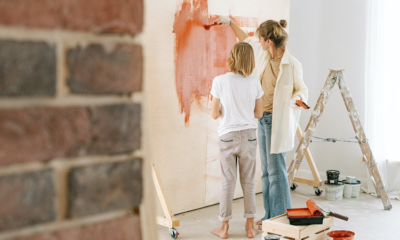Fashion
Sustainable Style: How Eco-Fashion is Redefining Modern Wardrobes

In recent years, the clarion call for sustainability has resonated far and wide, with the fashion industry being one of its most active amplifiers. As the second-largest polluter globally, the fashion industry has faced increased scrutiny for its environmental and ethical practices.
In response, an eco-revolution has been brewing, leading to the emergence of sustainable style, or ‘eco-fashion.’ Let’s dive deep into how this shift is redefining modern wardrobes and changing the face of fashion.
Understanding Eco-Fashion
At its core, eco-fashion is about creating environmentally and socio-economically sustainable clothes. This means adopting practices that minimize environmental damage while ensuring the ethical treatment of all supply chain stakeholders. Whether it’s the organic cotton in your t-shirt, the cruelty-free silk of your dress, or the fair wages of the craftsman behind your handbag, each aspect plays a role in this sustainable transformation.
Eco-Materials Lead the Way
One of the foremost changes in the sustainable fashion arena is the materials used. Traditional materials like conventional cotton, which requires a significant amount of water and pesticides, are being replaced or supplemented by:
Organic Cotton
Grown without harmful chemicals, conserving biodiversity and promoting healthier ecosystems.
Bamboo and Hemp
Rapidly renewable resources that require minimal resources and no pesticides.
Recycled Fabrics
Often sourced from post-consumer waste like PET bottles, this approach gives a second life to materials that would otherwise end up in landfills.
Piñatex
An alternative to leather, made from the fibers of pineapple leaves.
Ethical Manufacturing is Non-Negotiable
Beyond materials, the manufacturing processes are witnessing a green overhaul. Brands are adopting energy-efficient production methods, reducing waste, and ensuring wastewater treatment. Additionally, the ‘slow fashion’ movement discourages mass production, promoting longevity and quality over disposable fashion.
Simultaneously, there’s a rising emphasis on ethical practices. Fair wages, safe working conditions, and a strict no-child-labor policy are becoming the norm rather than the exception.
Transparency is the New Trend
Today’s consumers are more informed and conscious than ever. They want to know the origins of their clothing, the materials used, and the conditions under which they were made. Brands are responding with complete transparency, offering traceability from farm to wardrobe.
Reinventing Consumer Habits
Eco-fashion is not just about changing how clothes are made but also about altering consumer behavior:
Wardrobe Capsules
Instead of hoarding clothes, there’s a growing trend of maintaining a capsule wardrobe – a collection of timeless pieces that can be mixed and matched, reducing the need for constant purchasing.
Quality Over Quantity
Consumers are becoming more inclined to buy fewer items of higher quality, ensuring longevity and reducing waste.
Clothing Rentals
Many are opting to rent outfits for events or occasions rather than buying something new they might wear only once.
Second-hand Markets
Thrifting has gained immense popularity as it promotes the recycling of clothes, extending their life cycle.
Challenges on the Horizon
While the momentum towards eco-fashion is strong, challenges remain. Sustainable clothing often comes with a higher price tag due to the costs involved in ethical practices and quality materials. It is essential to educate consumers about the long-term benefits for the planet and their wallets.
Moreover, greenwashing – where brands exaggerate or falsely claim their products are sustainable – is a pressing issue. Regulatory bodies must step in and ensure that claims are genuine and hold brands accountable.
Conclusion
Eco-fashion represents a profound shift in the industry’s consciousness, mirroring the global demand for sustainability. While the road ahead might have its bumps, the trajectory is clear. Sustainable style is not just a passing trend; it’s the future of fashion. As designers craft with conscience and consumers purchase with purpose, modern wardrobes are set to be not just reflections of personal style, but also of global responsibility.

 Home Improvement7 years ago
Home Improvement7 years agoHome Improvement is The Best Way To Go.

 Home Improvement6 years ago
Home Improvement6 years agoGreen Alternatives for Carpet Cleaning

 Technology5 years ago
Technology5 years agoHow the iPad Powered Through All the Flak

 Technology7 years ago
Technology7 years agoAustralia’s Tech Start-ups Could Become Highly Profitable

 Technology7 years ago
Technology7 years agoAdvantages of Using Safety Management Software

 Home Improvement7 years ago
Home Improvement7 years agoHow to Survive a Renovation Project

 Technology7 years ago
Technology7 years agoMust Have Photography Apps For Your Tablet

 Travel7 years ago
Travel7 years agoTake a Stop in a Hotel in Munich for the Vacation of a Lifetime





















0 Comments
You must be logged in to post a comment Login